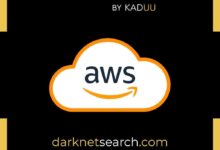AWS Certified Cloud Practitioner: 7 Ultimate Benefits Revealed
So, you’ve heard about the AWS Certified Cloud Practitioner certification and you’re wondering: Is it worth it? Let’s cut through the noise. This guide dives deep into everything you need to know—why it matters, how to get it, and how it can transform your tech career.
What Is the AWS Certified Cloud Practitioner?

The AWS Certified Cloud Practitioner is Amazon Web Services’ entry-level certification designed for individuals who want to demonstrate a solid understanding of the AWS Cloud. It’s the perfect starting point for non-technical roles, aspiring cloud professionals, and IT veterans looking to validate their cloud knowledge.
Who Should Take This Certification?
This certification isn’t just for developers or system administrators. It’s ideal for sales, procurement, and management professionals who need a foundational grasp of cloud concepts. Whether you’re in finance, project management, or even marketing, understanding AWS can give you a competitive edge.
- IT support staff transitioning to cloud roles
- Business analysts working with cloud-based data
- Managers overseeing cloud budgets and strategies
- Students exploring career paths in tech
According to AWS’s official certification page, this credential validates your ability to define AWS services, core architectural principles, security, and pricing models.
Prerequisites and Exam Details
One of the best things about the AWS Certified Cloud Practitioner exam (CLF-C02) is that there are no formal prerequisites. However, AWS recommends at least six months of exposure to AWS Cloud—whether through hands-on experience, training, or self-study.
- Exam code: CLF-C02
- Length: 90 minutes
- Questions: 65 (multiple choice and multiple response)
- Passing score: 700 out of 1000
- Cost: $100 USD (subject to change)
The exam covers four domains:
- Cloud Concepts (26%)
- Security and Compliance (25%)
- Technology (33%)
- Billing and Pricing (16%)
“The Cloud Practitioner certification helped me speak the same language as our engineering team. It bridged the gap between business and tech.” — Sarah Kim, Product Manager
Why Become an AWS Certified Cloud Practitioner?
Earning the AWS Certified Cloud Practitioner credential isn’t just about adding a line to your resume. It’s about unlocking real-world value—both professionally and personally. Let’s explore the tangible benefits.
Career Advancement and Job Opportunities
In today’s digital-first economy, cloud skills are in high demand. According to a 2023 report by LinkedIn’s Workforce Report, cloud computing remains one of the top five most sought-after skills across industries.
With the AWS Certified Cloud Practitioner certification, you position yourself as someone who understands the backbone of modern IT infrastructure. This opens doors to roles like:
- Cloud Support Associate
- Technical Sales Representative
- Cloud Project Coordinator
- IT Consultant
Even if you’re not in a technical role, this certification signals initiative and adaptability—traits employers value highly.
Increased Earning Potential
Let’s talk numbers. While the AWS Certified Cloud Practitioner is an entry-level cert, it can still boost your salary. According to Salary.com, professionals with this certification earn an average of $95,000 per year in the U.S., with top earners surpassing $110,000.
While experience and location play a role, certification often serves as a salary differentiator during hiring and promotion cycles. Some companies even offer certification bonuses or reimbursement programs.
Global Recognition and Credibility
AWS is the world’s leading cloud provider, powering over 1 million businesses, including Netflix, Airbnb, and NASA. When you earn an AWS certification, you’re not just getting a piece of paper—you’re joining a global community of trusted professionals.
The AWS Certified Cloud Practitioner is recognized across continents and industries. Whether you’re applying for a job in Singapore, Germany, or Brazil, this credential carries weight.
“Certifications like AWS CCP give candidates a competitive advantage. They show commitment to learning and staying current.” — Mark Thompson, IT Hiring Manager at TechNova Inc.
How to Prepare for the AWS Certified Cloud Practitioner Exam
Preparation is key to passing any certification exam. The good news? With the right strategy, you can pass the AWS Certified Cloud Practitioner exam on your first try—even with limited technical background.
Step 1: Understand the Exam Guide
Your first stop should be the official AWS Certified Cloud Practitioner Exam Guide. This document breaks down the four domains and their weightings, giving you a clear roadmap of what to study.
Focus areas include:
- Differentiating between IaaS, PaaS, and SaaS
- Understanding the AWS Shared Responsibility Model
- Navigating AWS pricing models (On-Demand, Reserved Instances, Spot Instances)
- Identifying core AWS services like EC2, S3, RDS, and Lambda
Make sure you can explain these concepts in simple terms—because that’s exactly what the exam tests.
Step 2: Use Free and Paid Learning Resources
AWS offers a wealth of free resources to help you prepare. Start with the AWS Cloud Practitioner Essentials course, a free digital training that takes about 6 hours to complete.
For more structured learning, consider platforms like:
- Udemy: Stephane Maarek’s AWS Certified Cloud Practitioner course (over 500,000 students)
- Pluralsight: Cloud Practitioner path with hands-on labs
- A Cloud Guru: Interactive learning with sandbox environments
These platforms offer practice exams that mimic the real test format, helping you build confidence and identify knowledge gaps.
Step 3: Gain Hands-On Experience
You don’t need to be a coder to benefit from hands-on practice. Sign up for the AWS Free Tier, which gives you 12 months of free access to popular services like EC2, S3, and Lambda (within usage limits).
Try these beginner-friendly exercises:
- Create an S3 bucket and upload a file
- Launch a free-tier EC2 instance and connect via SSH
- Explore the AWS Management Console and navigate between services
Hands-on experience helps solidify abstract concepts and reduces exam-day anxiety.
Key AWS Services You Need to Know for the Exam
The AWS Certified Cloud Practitioner exam doesn’t require deep technical knowledge, but you must understand the purpose and use cases of core AWS services. Let’s break down the essentials.
Compute Services
AWS offers several compute options, each suited for different workloads.
- Amazon EC2 (Elastic Compute Cloud): Virtual servers in the cloud. Think of it as renting a computer over the internet.
- AWS Lambda: Serverless computing that runs code in response to events. No servers to manage.
- Amazon Elastic Beanstalk: Platform-as-a-Service (PaaS) for deploying and scaling web applications.
Know when to use each: EC2 for full control, Lambda for event-driven tasks, and Elastic Beanstalk for quick app deployment.
Storage Services
Storage is a fundamental part of cloud computing. AWS provides scalable, secure, and durable options.
- Amazon S3 (Simple Storage Service): Object storage for files, backups, and media. Highly durable and available.
- Amazon EBS (Elastic Block Store): Block storage for EC2 instances, like a virtual hard drive.
- Amazon Glacier: Low-cost archival storage for data you rarely access.
Understand that S3 is for objects, EBS is for volumes, and Glacier is for long-term retention.
Database and Networking Services
Even non-technical professionals should grasp the basics of AWS databases and networking.
- Amazon RDS (Relational Database Service): Managed relational databases (MySQL, PostgreSQL, etc.). AWS handles backups, patching, and scaling.
- Amazon DynamoDB: NoSQL database for fast, scalable applications.
- Amazon VPC (Virtual Private Cloud): Isolated section of the AWS Cloud where you can launch resources in a virtual network.
- Amazon Route 53: Scalable DNS web service for routing end users to internet applications.
You don’t need to configure these services, but you should know their purpose and benefits.
“Understanding AWS services helped me make better decisions during client meetings. I could explain why we recommended S3 over EBS for their backup solution.” — James Reed, Sales Engineer
Security, Compliance, and the Shared Responsibility Model
Security is a top concern for any organization moving to the cloud. The AWS Certified Cloud Practitioner exam dedicates 25% of its content to security and compliance, so this is a critical area to master.
What Is the AWS Shared Responsibility Model?
This model defines who is responsible for what in the cloud. AWS is responsible for the security of the cloud (hardware, software, facilities), while customers are responsible for security in the cloud (data, applications, access controls).
For example:
- AWS manages the physical security of data centers
- You manage user access via IAM (Identity and Access Management)
- AWS ensures network infrastructure is secure
- You configure firewalls and encryption for your data
This model allows AWS to scale securely while giving customers control over their environment.
Key Security Services to Know
Familiarize yourself with these core AWS security tools:
- AWS IAM (Identity and Access Management): Controls who can access AWS resources and what they can do.
- AWS Shield: Managed DDoS protection service.
- AWS WAF (Web Application Firewall): Protects web applications from common exploits.
- AWS KMS (Key Management Service): Creates and manages encryption keys.
While you won’t be configuring these in the exam, you should understand their role in securing cloud environments.
Compliance and Governance
AWS complies with global standards like GDPR, HIPAA, SOC, and ISO. This means organizations can meet regulatory requirements when using AWS.
As a Cloud Practitioner, you should know:
- How AWS Artifact provides on-demand access to compliance reports
- That AWS Config tracks configuration changes over time
- The role of AWS CloudTrail in logging API calls for audit purposes
These tools help organizations maintain compliance and demonstrate accountability.
Billing, Pricing, and Cost Management
One of the most practical aspects of the AWS Certified Cloud Practitioner exam is understanding how AWS pricing works. This knowledge is invaluable for budgeting and cost optimization.
Understanding AWS Pricing Models
AWS offers flexible pricing options to suit different needs:
- On-Demand: Pay for compute capacity by the hour or second with no long-term commitments.
- Reserved Instances: Commit to a 1- or 3-year term for significant discounts (up to 75%).
- Spot Instances: Bid on unused EC2 capacity for up to 90% off, ideal for fault-tolerant workloads.
- Savings Plans: Commit to a consistent amount of usage (measured in $/hour) for lower prices.
Know when to use each: On-Demand for unpredictable workloads, Reserved for steady-state applications, and Spot for batch processing.
Using AWS Cost Management Tools
AWS provides tools to monitor and control spending:
- AWS Budgets: Set custom cost and usage budgets to track spending.
- AWS Cost Explorer: Visualize and analyze your AWS spending over time.
- AWS Trusted Advisor: Provides real-time guidance to optimize costs, performance, and security.
These tools help organizations avoid bill shocks and optimize resource usage.
Total Cost of Ownership (TCO) and Cloud Economics
A key concept in the exam is understanding the economic advantages of the cloud. The AWS TCO Calculator helps compare on-premises costs with AWS.
Benefits include:
- Reduced capital expenditure (CapEx)
- Pay-as-you-go pricing
- Scalability without over-provisioning
- Lower operational overhead
Being able to explain these benefits is crucial for business and non-technical roles.
Next Steps After Earning Your AWS Certified Cloud Practitioner
Congratulations—you’ve earned your AWS Certified Cloud Practitioner! But this isn’t the end. It’s the beginning of a broader cloud journey.
How to Leverage Your Certification
Update your LinkedIn profile, resume, and email signature to showcase your achievement. Share your success on social media with the hashtag #AWSCertified.
Consider these actions:
- Request a performance review or salary discussion
- Volunteer for cloud-related projects at work
- Mentor others who are starting their cloud journey
Many professionals use this certification as a springboard to more advanced AWS credentials.
Advanced AWS Certifications to Consider
Once you’ve mastered the fundamentals, you can pursue role-based certifications:
- AWS Certified Solutions Architect – Associate: Design distributed systems on AWS.
- AWS Certified Developer – Associate: Build and deploy cloud applications.
- AWS Certified SysOps Administrator – Associate: Manage and operate AWS environments.
- AWS Certified Security – Specialty: Deep dive into cloud security.
Each of these builds on the knowledge you gained as a Cloud Practitioner.
Staying Current with AWS
AWS evolves rapidly. New services, features, and best practices emerge constantly. To stay relevant:
- Subscribe to the AWS Blog
- Attend AWS re:Invent or local AWS User Groups
- Retake the exam every two years to keep your certification active
Continuous learning is the key to long-term success in the cloud.
What is the AWS Certified Cloud Practitioner exam format?
The exam consists of 65 multiple-choice and multiple-response questions, to be completed in 90 minutes. It is administered by Pearson VUE and available online or at testing centers.
How much does the AWS Certified Cloud Practitioner exam cost?
The exam fee is $100 USD. AWS occasionally offers certification credits through training programs or events.
Is the AWS Certified Cloud Practitioner worth it for non-technical roles?
Absolutely. Business analysts, project managers, and sales professionals benefit from understanding cloud fundamentals, pricing, and security—making them more effective in cloud-driven organizations.
How long does it take to prepare for the AWS Certified Cloud Practitioner?
Most candidates spend 4–6 weeks preparing, depending on prior experience. Beginners should allocate 60–80 hours of study time.
Can I take the AWS Certified Cloud Practitioner exam online?
Yes, the exam can be taken online via Pearson VUE’s remote proctoring service, allowing you to test from home or office.
Earning the AWS Certified Cloud Practitioner certification is more than just a career move—it’s a strategic investment in your future. Whether you’re just starting out or looking to pivot into tech, this credential provides a solid foundation in cloud computing. From understanding core AWS services to mastering security and cost models, the knowledge you gain is both practical and powerful. And the best part? It’s accessible to anyone, regardless of technical background. So, if you’ve been on the fence, now’s the time to take the leap. The cloud isn’t the future—it’s the present. And with the AWS Certified Cloud Practitioner, you’ll be ready to thrive in it.
Further Reading:









